
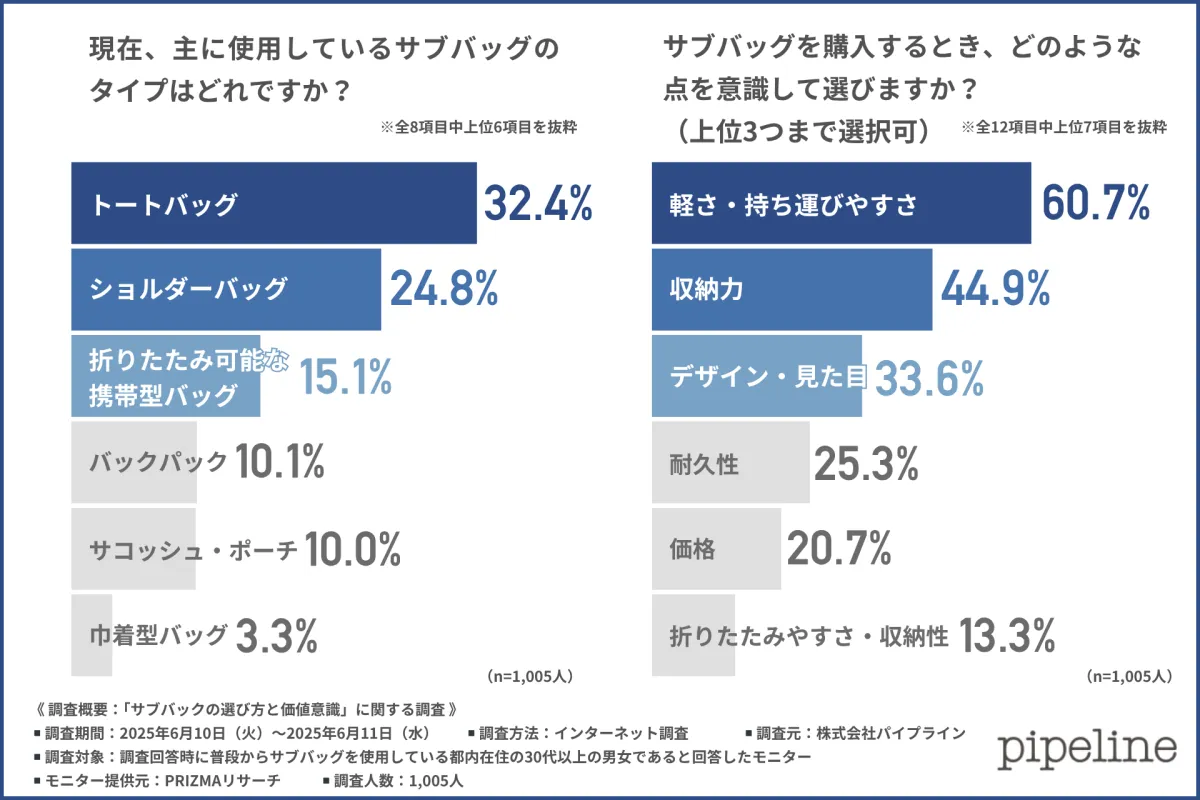
Choosing the Right Sub-Bag: Enhancing Life Quality Through Thoughtful Selection
Choosing the Right Sub-Bag: Enhancing Life Quality Through Thoughtful Selection
In an era where environmental consciousness is on the rise, the significance of sub-bags in daily life cannot be understated. Pipeline Inc., headquartered in Chuo, Tokyo, has conducted a survey examining how urban residents aged 30 and over select their sub-bags, reflecting their values and lifestyles. To keep up with the trend of reducing plastic waste and to adapt to emerging shopping habits, many individuals are incorporating sub-bags into their routine, whether for commuting, leisure, or travel.
Popular Choices and Practicality of Sub-Bags
The survey involved 1,005 participants who regularly use sub-bags. The majority favored tote bags (32.4%) followed by shoulder bags (24.8%) and collapsible carry bags (15.1%). This trend indicates a preference for practicality, as tote and shoulder bags offer ease of access and sufficient space, crucial for daily activities. Participants prioritized functionality over fashion, highlighting a clear inclination towards practicality.
When asked about key factors influencing their purchase, respondents indicated lightweight and portability (60.7%), storage capacity (44.9%), and design aesthetics (33.6%) as critical considerations. The focus remains on durability and ease of use, reinforcing practicality as the primary motivation behind sub-bag selection.
Longevity and Value: Key Features of Sub-Bags
Interestingly, about 68.3% of respondents reported using the same sub-bag for over a year, emphasizing a trend toward long-term usability. A minority opts for more frequent replacements, suggesting that sturdiness and reliability drive their purchasing behavior. Price ranges varied, with many preferring bags between 5,000 to 10,000 yen, which couples affordability with perceived quality.
Sub-bag users demonstrate a general tendency to avoid overly cheap or expensive items in favor of options that deliver value. When considering materials, synthetic fibers like nylon and polyester (67.1%), followed by natural fibers (39.1%), were preferred. The emphasis on lightweight and durable materials underscores their importance in practical daily use.
A Shift Toward Sustainable Choices
Moreover, an essential finding from the survey indicates that around 70% of respondents find eco-friendly bags appealing. This growing fascination aligns with individuals’ desire to contribute to environmental preservation through their purchasing habits. Participants expressed their attraction toward these products not only because of their designs but also due to the underlying ethical considerations that companies adopt regarding sustainability.
As lifestyle choices evolve, consumers are increasingly seeking products that reflect their identities and environmental beliefs. The research reveals a shift towards selections aligned with sustainable practices and a value-conscious mindset. Notably, people show a preference for brands demonstrating environmental responsibility, contributing to a collective societal expectation to lessen ecological footprints through thoughtful consumerism.
Conclusion: Sub-Bags as Expressions of Personal Values
In conclusion, the survey by Pipeline Inc. illuminates how everyday items like sub-bags are embedded with values reflecting practicality, sustainability, and personal taste. The favored choices reflect a clear inclination toward materials and designs conducive to ease of use and environmental concerns. As consumers navigate their options, the expectation for brands to resonate with their sense of ethics and sustainability will likely continue to rise in importance.
Ultimately, sub-bags transcend mere functionality; they embody consumers' values and aspirations for a sustainable lifestyle. As awareness increases, the demand for well-designed, eco-conscious products that align with personal and social ideals will be essential driving factors in consumer choice moving forward.
For brands, meeting these evolving expectations will require embracing sustainable practices and innovative designs, ensuring they remain relevant and responsive to the needs of their conscientious clientele.
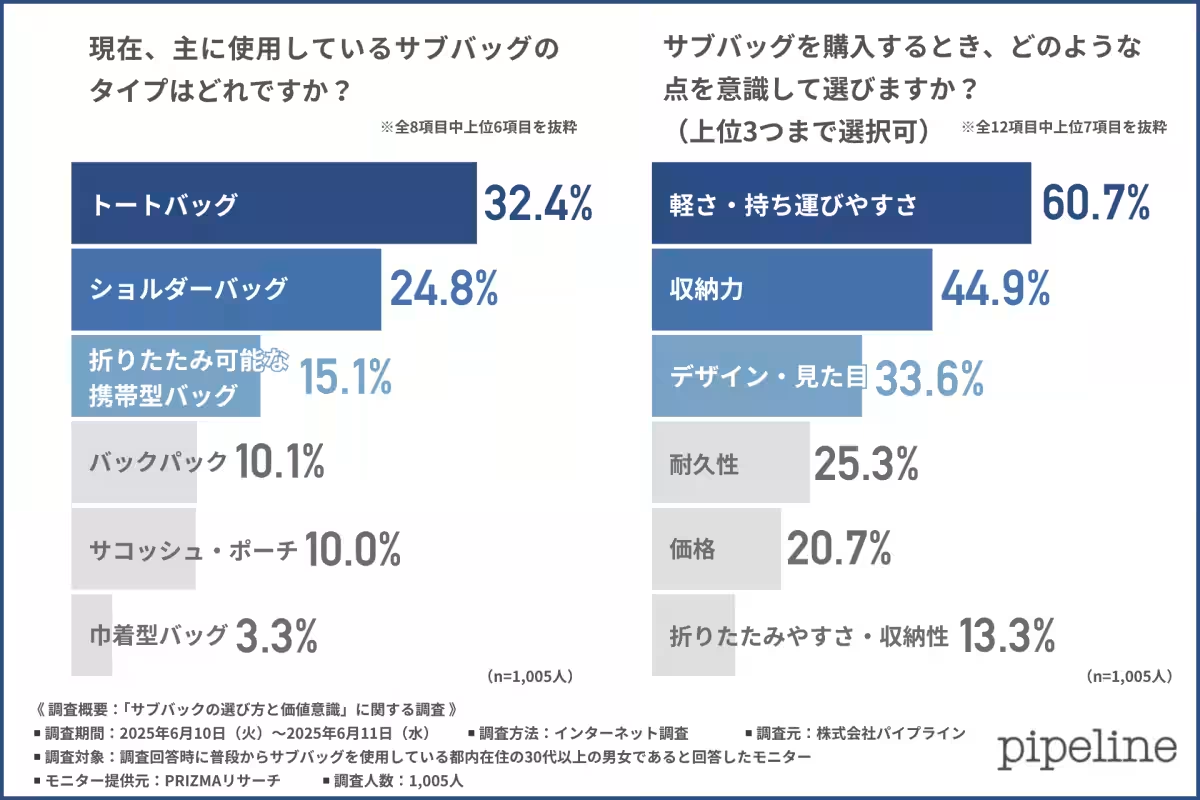
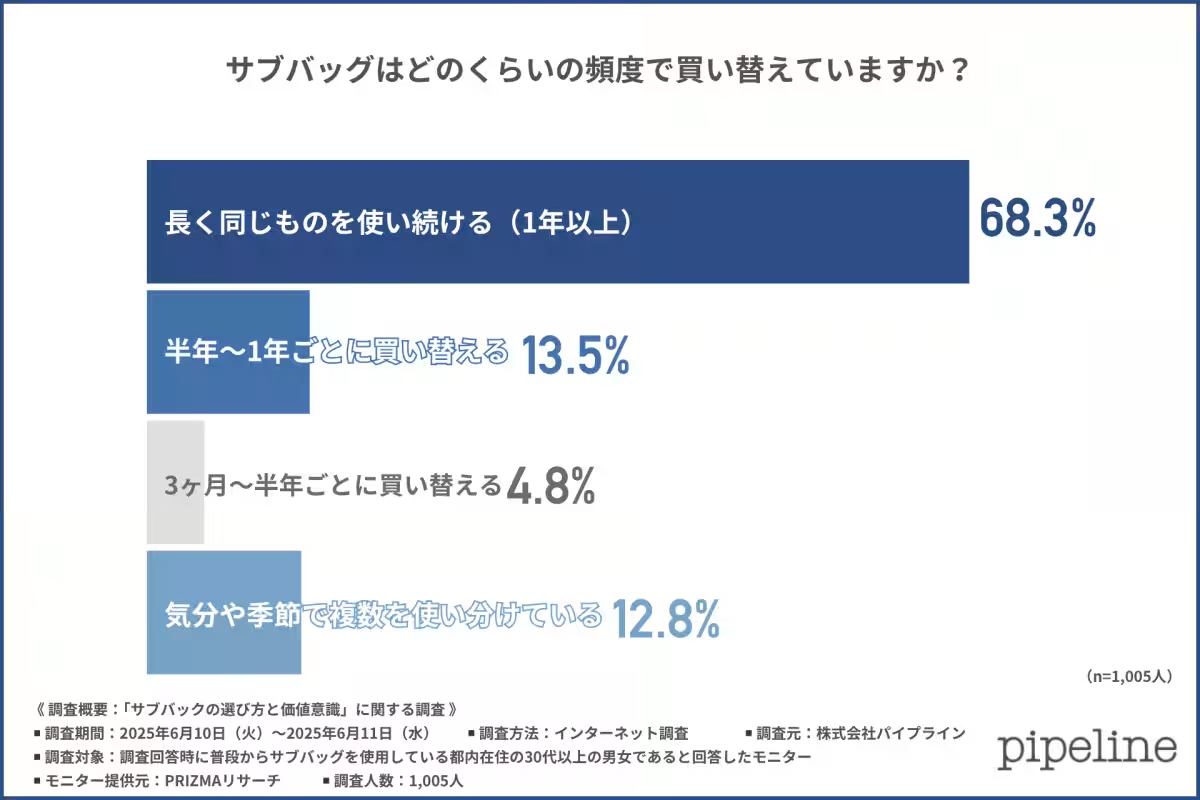
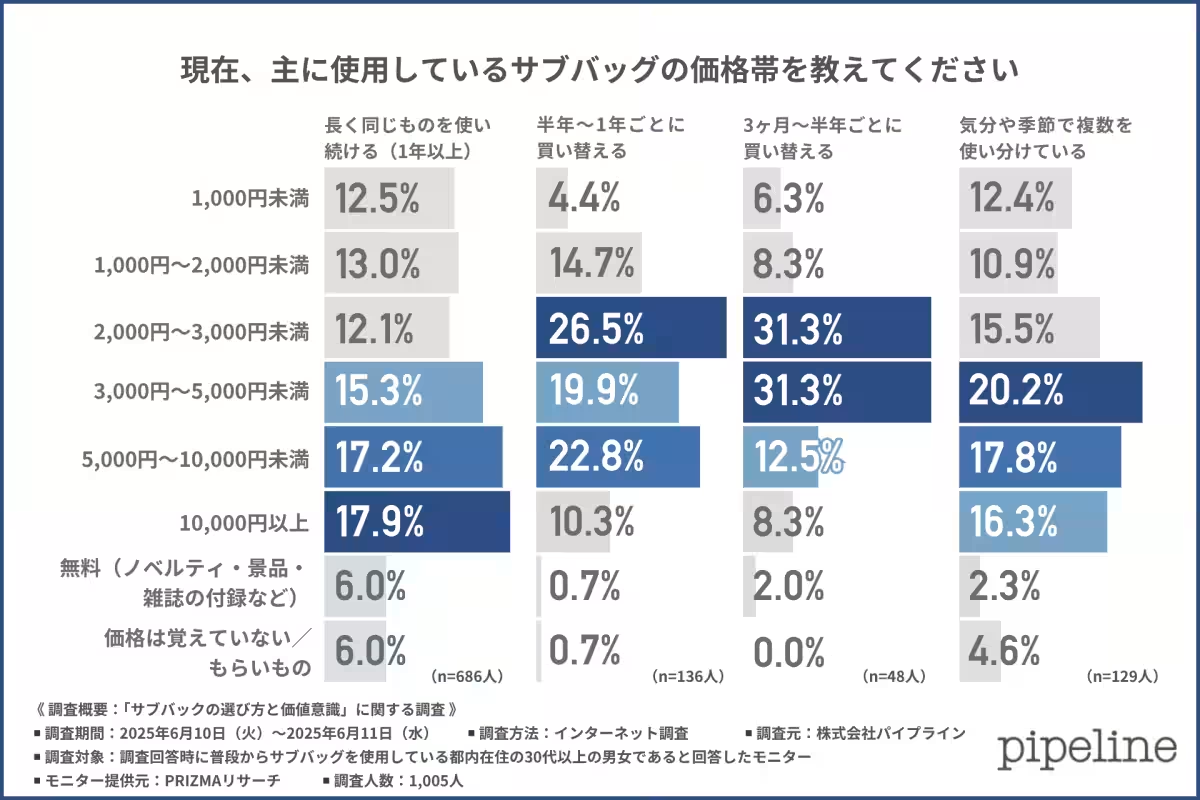
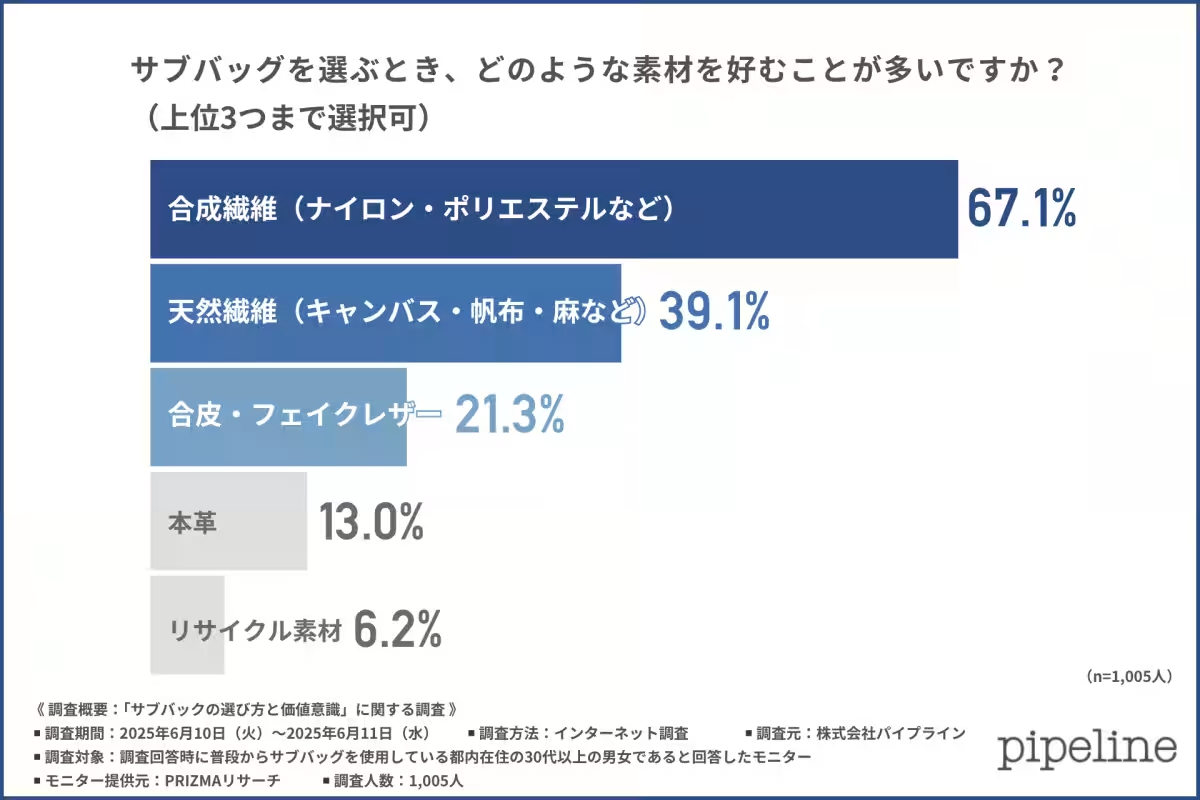
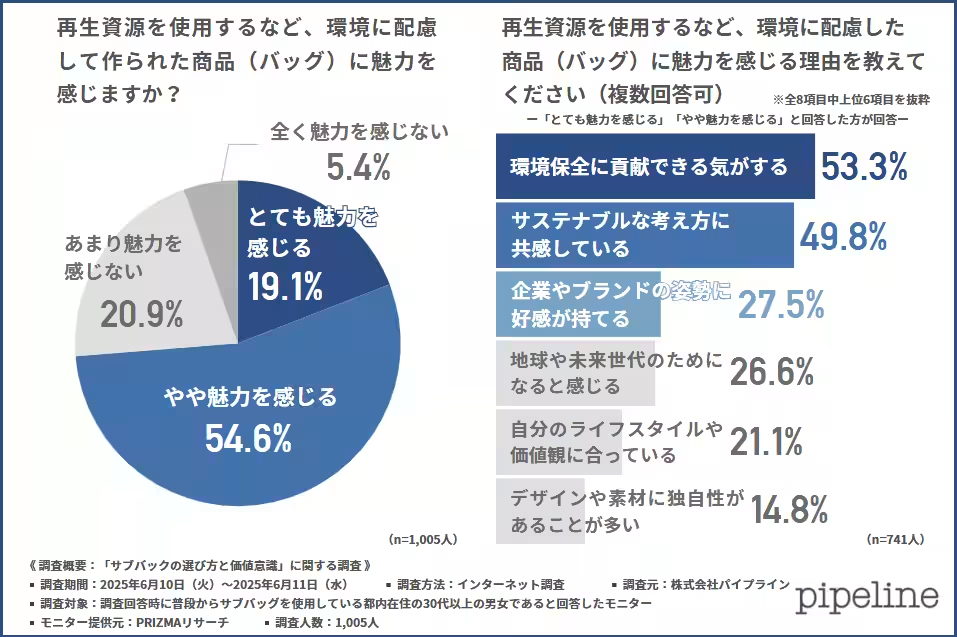
Topics Consumer Products & Retail)










【About Using Articles】
You can freely use the title and article content by linking to the page where the article is posted.
※ Images cannot be used.
【About Links】
Links are free to use.